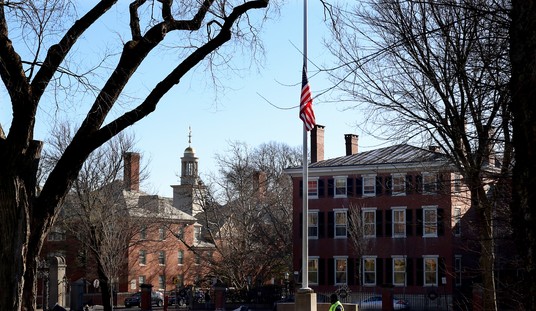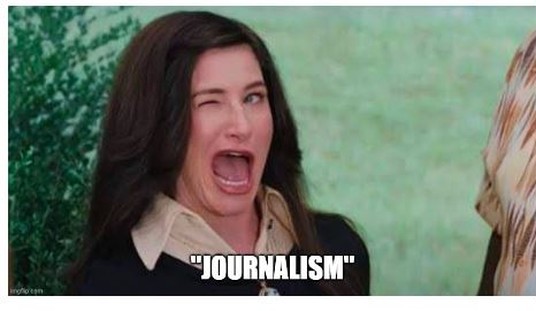This is a long post, but worth the read.
We've told you repeatedly that Kamala Harris' first major policy platform is straight-up communism -- sorry, Kamunism -- in the form of price controls on groceries. CNN and the Washington Post have even raised the alarm on the fact this proposal won't work (because it never has).
Here's what will happen if she gets her way:
People need to stop overreacting about Kamala’s plan to reduce food inflation, as if it would lead to communism, mass starvation, and the end of America.
— Robert Sterling (@RobertMSterling) August 17, 2024
I worked in M&A in the food industry. Here’s a step-by-step summary of what would actually happen:
1. The government… pic.twitter.com/r6drzTFf1a
Going to go through each point after the cut off one by one.
1. The government announces that grocery retailers aren’t allowed to raise prices.
Of course. If Kamala's premise is companies aren't allowed to engage in 'illegal price gouging', they have to freeze prices.
2. Grocery stores, which operate on 1-2% net margins, can’t survive if their suppliers raise prices. So the government announces that food producers (Kraft Heinz, ConAgra, Tyson, Hormel, et. al.) also aren’t allowed to raise prices.
Things begin to snowball.
3. Not all grocery stores are created equal. Stores in lower-income areas make less money than those in higher-income areas, as the former disproportionately sell lower-margin prepackaged foods (“center of the store”) instead of higher-margin fresh products like meat (“perimeter of the store”). Because stores in lower-income areas aren’t able to cover overhead (remember, even if their wholesale costs are fixed, their labor, utilities, insurance, and other operating expenses aren’t fixed… yet), grocery chains start to shut them down. Food deserts in rural areas and in low-income urban areas alike become worse.
Recommended
Remember when the Left said food deserts were a sign of systemic racism? Under Kamala, they're federal policy.
4. Meanwhile, margins for food producers are also quickly eroding. Their primary costs (ingredients, energy, and labor) aren’t fixed, and their shrinking gross profits leave less cash flow available to cover overhead, maintain facilities, and reinvest in additional production capacity.
Price controls on groceries also means price controls on wages.
5. Grocery chains, which have finite shelf space, start to repurpose their stores (those they didn’t have to shut down, I should say) to sell more non-price-controlled items—everything from nutrition supplements to kitchenware to apparel—and less price-controlled food products. Your local Kroger or Safeway starts to look and feel more like a Walmart.
Stock up.
6. Food producers stop making products with lower margins. Grocery chain start competing with each other to secure inventory. Since they can’t compete by offering stronger prices (remember, producers aren’t allowed to raise prices here, and, even if they could, grocery chains no longer have the gross profit to bear price increases), they compete on things like payment terms.
Things continue to get worse.
7. Small grocery chains start to shut down entirely, or get sold to larger chains like Kroger. In addition to not being able to cover fixed costs, a major reason for this is because they can no longer reliably secure delivery of products, due to producers prioritizing sales to larger customers, which are able to leverage their stronger balance sheets to offer superior payment terms.
People lose jobs, too.
8. Smaller food producers—which typically sell via distributors, rather than directly to grocery chains—start to go out of business. Because these producers have an additional step their value chains, and because they have lower volumes over which to spread their fixed costs, their cost structure is inherently disadvantaged compared to major food producers. When grocery stores aren’t able to raise prices, cutting product costs becomes all the more important, and deprioritizing purchases from smaller producers is an easy way to do so.
More job losses, even less food.
9. As supply chains break down, lines start to form outside grocery stores every morning. Cities assign police officers to patrol store parking lots, and food producers draft contingency plans to assign armed escorts to delivery trucks.
Ah, bread lines.
10. The federal government announces a program to issue block grants for states to purchase and operate shuttered grocery stores. The USDA also seizes closed-down production facilities.
In ten short steps, we go to full-blown communism.
11. The government announces that prices for all key food costs—corn, wheat, cattle, energy, etc.—are also now fixed, to stop “profiteers” from gouging the now-government-operated food industry.
Which also impacts the farming, energy, and transportation sectors.
12. Shockingly, the government struggles to operate one of the most complex industries on the planet. The entire food supply chain starts imploding.
13. Communism, mass starvation, and the end of America quickly ensue.
Hey wait a second
This has happened everywhere it's tried.
Good reading. However, it should be noted that the Politico headline starts with the false premise that "grocery price gouging" is occurring. https://t.co/Z61WeBxJSH
— Jay Caruso (@JayCaruso) August 18, 2024
Absolutely good reading.

























Join the conversation as a VIP Member